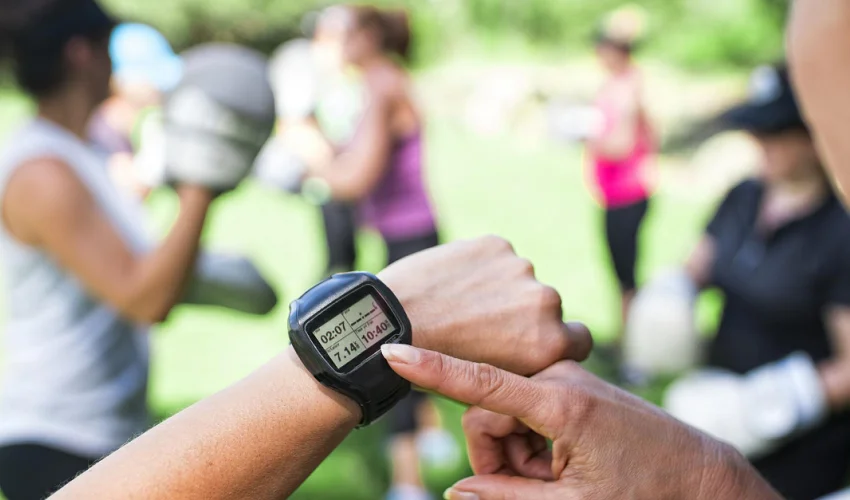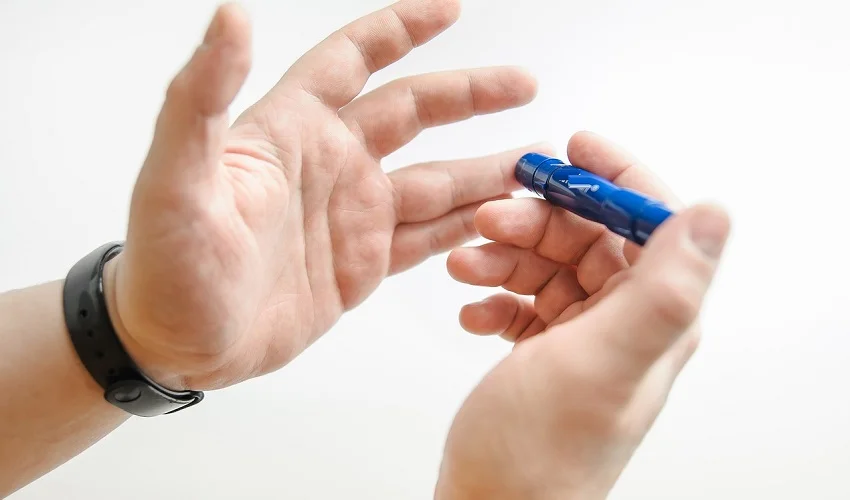Living with diabetes requires diligent management and proactive care to ensure a good quality of life. Among the various health concerns associated with diabetes, foot complications can significantly impact an individual’s well-being. Diabetes can lead to nerve damage (neuropathy) and reduced blood flow, making the feet more susceptible to infections, ulcers, and other issues. However, by understanding the importance of foot care and implementing preventive measures, individuals with diabetes can effectively reduce the risk of complications and maintain healthy feet. This comprehensive article aims to provide diabetic patients and caregivers with the necessary information and practical tips for optimal foot care.
Understanding the Link Between Diabetes and Foot Complications
Diabetes and neuropathy
Diabetes can damage the nerves in the feet, leading to a condition called diabetic neuropathy. High blood sugar levels over time can cause nerve damage, resulting in numbness, tingling, and loss of sensation in the feet. This loss of feeling can make it difficult to detect injuries or infections, increasing the risk of complications.
Diabetes and peripheral arterial disease
Peripheral arterial disease (PAD) refers to reduced blood flow to the extremities, including the feet, due to diabetes-related damage to blood vessels. Poor blood circulation can impair wound healing and increase the risk of infections. Proper management of blood sugar levels and cardiovascular health is crucial to prevent PAD.
Impact of high blood sugar levels on foot health
Elevated blood sugar levels can affect various body systems, including the feet. Prolonged hyperglycemia can lead to poor circulation, weakened immune system response, and delayed wound healing. These factors contribute to the development of foot problems in individuals with diabetes.
Common Foot Problems Associated with Diabetes
Diabetic neuropathy
Diabetic neuropathy is a common complication of diabetes that can cause a loss of sensation or altered sensation in the feet. This can lead to difficulties in detecting injuries, such as cuts, blisters, or ulcers. Without proper care and attention, these minor injuries can escalate into serious infections or foot ulcers.
Peripheral arterial disease
Peripheral arterial disease (PAD) is characterized by reduced blood flow to the extremities, including the feet. In individuals with diabetes, PAD can lead to poor circulation, making it challenging for wounds to heal properly. Reduced blood flow also means less oxygen and nutrients reach the feet, increasing the risk of tissue damage and infections.
Foot ulcers: Causes, risk factors, and prevention
Foot ulcers are open sores that typically occur on the bottom of the foot. They can develop from minor injuries that go unnoticed due to reduced sensation. Poor blood flow and nerve damage further exacerbate the risk of foot ulcers. Regular foot inspections and appropriate wound care are crucial to prevent and manage ulcers.
Fungal infections
Diabetes can increase the risk of fungal infections, such as athlete’s foot. Moist environments, compromised immune systems, and reduced blood flow provide ideal conditions for fungi to thrive. Proper foot hygiene, including keeping the feet clean and dry, is essential in preventing and treating fungal infections.
Importance of Regular Foot Examinations
The role of healthcare professionals in foot care: Regular foot examinations by healthcare professionals, including podiatrists and diabetes educators, are essential for the early detection of foot problems. These professionals can assess nerve function, blood flow, and overall foot health, providing guidance on preventive measures and treatment options.
Self-examination techniques and recommended frequency: In addition to professional examinations, individuals with diabetes should perform regular self-examinations of their feet. Self-checks involve inspecting the feet for any changes, such as cuts, sores, blisters, or abnormalities. The recommended frequency for self-examinations is daily, particularly for those with neuropathy or a history of foot complications.
Identifying warning signs and seeking prompt medical attention: It is crucial for individuals with diabetes to be aware of warning signs that require immediate medical attention. These include redness, swelling, increased pain, discharge, or the presence of non-healing wounds or ulcers. Promptly addressing these symptoms can prevent the progression of complications.
Essential Foot Care Practices for Diabetic Patients
Daily foot hygiene: Proper foot hygiene involves daily cleaning with mild soap and warm water, followed by thorough drying, especially between the toes. Moisturizing the feet with a diabetic-friendly lotion helps prevent dryness and cracking, but it’s important to avoid applying lotion between the toes to prevent excess moisture.
Nail care: Trimming toenails straight across and filing the edges helps prevent ingrown toenails and potential injuries. It is recommended to seek professional assistance for nail care if there is difficulty or impaired sensation in handling nail clippers.
Choosing appropriate footwear: Selecting suitable footwear plays a crucial role in preventing foot complications. Shoes should provide ample support, cushioning, and protection. Avoiding tight or pointed-toe shoes, high heels, and open-toed sandals is recommended. Diabetic footwear or shoes with extra depth may be beneficial for individuals with foot deformities or ulcers.
Protecting the feet: Protecting the feet from injuries is essential for individuals with diabetes. This includes avoiding walking barefoot, using protective footwear in high-risk environments, and taking precautions while trimming toenails or using hot water for soaking.
Importance of wearing diabetic socks and orthotic inserts: Diabetic socks are specifically designed to promote proper circulation, reduce pressure points, and manage moisture. These socks have non-restrictive cuffs and seamless construction, reducing the risk of blisters and ulcers. Orthotic inserts or custom-made shoe inserts can provide additional support and help distribute pressure evenly.
Maintaining Optimal Blood Sugar Control
Impact of blood sugar levels on foot health: Maintaining stable blood sugar levels is crucial for overall foot health. Consistently high blood sugar can contribute to nerve damage, reduced blood flow, and impaired wound healing. Regular monitoring, proper diabetes management, and medication adherence are key to controlling blood sugar levels.
Dietary considerations and meal planning for diabetes management: A well-balanced diet that focuses on whole grains, lean proteins, fruits, vegetables, and healthy fats is beneficial for managing blood sugar levels. Portion control, carbohydrate counting, and regular mealtimes can help stabilize blood glucose. Consultation with a registered dietitian or diabetes educator can provide personalized dietary guidance.
Regular physical activity and its positive effects on foot circulation: Engaging in regular physical activity, such as walking, swimming, or cycling, improves blood circulation and helps maintain a healthy weight. Exercise also aids in blood sugar control and enhances overall cardiovascular health, benefiting foot health.
Seeking Professional Help: Podiatrists and Diabetes Educators
The role of podiatrists in diabetic foot care: Podiatrists specialize in foot care and play a vital role in managing foot complications associated with diabetes. They provide expert assessment, treatment, and guidance on preventive measures. Regular visits to a podiatrist are recommended, particularly for those with a history of foot complications.
Collaborating with diabetes educators for comprehensive care: Diabetes educators are healthcare professionals who specialize in teaching individuals with diabetes about their condition and how to manage it effectively. They provide education on foot care, self-management techniques, and lifestyle modifications. Collaborating with diabetes educators can enhance overall diabetes care and improve foot health outcomes.
Recommendations for regular check-ups and assessments: Individuals with diabetes should follow a schedule of regular check-ups and assessments, as advised by their healthcare team. This includes periodic foot examinations, blood pressure monitoring, cholesterol screening, and comprehensive diabetes evaluations. Regular follow-ups ensure early detection and timely intervention for any potential foot complications.
Strategies for Preventing Foot Complications
Foot care education: Educating individuals with diabetes about foot care is crucial for empowering them to take charge of their own health. Providing comprehensive information on foot hygiene, self-examinations, preventive measures, and potential complications helps individuals make informed decisions and actively participate in their foot care.
Smoking cessation: Smoking significantly increases the risk of peripheral arterial disease, exacerbating foot complications in individuals with diabetes. Quitting smoking is a crucial step in preventing complications, improving circulation, and promoting overall cardiovascular health.
Diabetic neuropathy management: Managing diabetic neuropathy involves a combination of lifestyle modifications and medications. Lifestyle changes may include maintaining stable blood sugar levels, engaging in regular physical activity, and implementing stress management techniques. Medications prescribed by healthcare professionals can help manage neuropathic symptoms and slow down the progression of nerve damage.
Blood pressure and cholesterol control: Controlling blood pressure and managing cholesterol levels are essential in preventing cardiovascular complications that can impact foot health. Regular monitoring, medication adherence, a heart-healthy diet, and lifestyle modifications, as advised by healthcare professionals, are crucial components of comprehensive foot care.
When to Seek Immediate Medical Attention
Signs of infection: Any signs of infection in the feet, such as redness, swelling, increased pain, or discharge, require immediate medical attention. Infections can quickly escalate and lead to serious complications, including cellulitis or bone infections.
Non-healing wounds or ulcers: Wounds or ulcers that do not heal within a reasonable time frame, despite appropriate care, should be evaluated promptly by a healthcare professional. Timely intervention can prevent the progression of the wound and reduce the risk of complications.
Recognizing signs of Charcot foot and diabetic foot gangrene: Charcot foot is a condition characterized by bone and joint damage due to neuropathy. It can result in deformities and instability. Diabetic foot gangrene refers to tissue death due to infections and reduced blood flow. Both conditions require immediate medical attention to prevent further complications, including amputation.
By prioritizing foot care and implementing preventive measures, individuals living with diabetes can significantly reduce the risk of foot complications and maintain healthy feet. Regular foot examinations, proper hygiene, appropriate footwear, optimal blood sugar control, and collaboration with healthcare professionals are all vital elements of comprehensive foot care. Remember, a proactive approach to foot health can enhance the overall quality of life for individuals with diabetes. By following the guidelines outlined in this article, diabetic patients and caregivers can stay informed and take active steps toward promoting healthy feet and minimizing complications.




